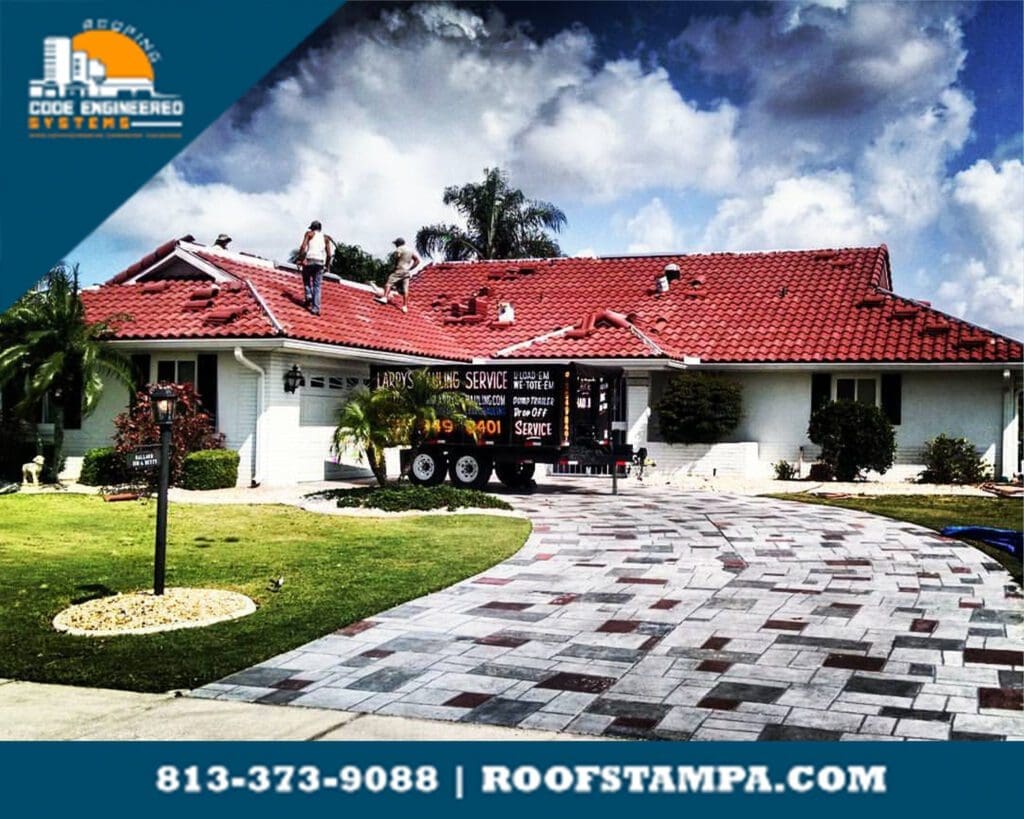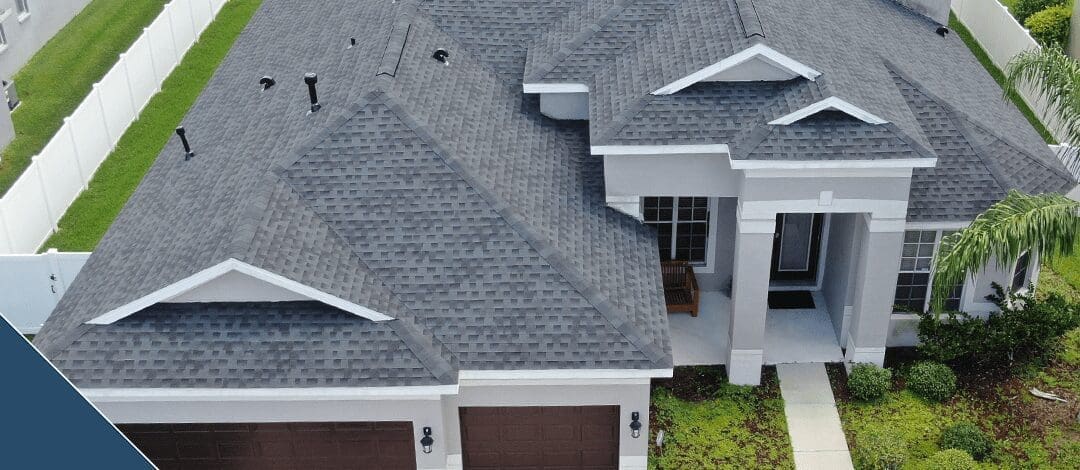When your home needs a new roof, cost is usually a major factor. For many people, saving money by choosing an energy-efficient product is a high priority, as well. You can save a substantial amount of money on your cooling bills by choosing certain products. We’re happy to note that manufacturers have raised their game and all the most popular roofing products can now be had in improved versions that are more energy efficient. So what’s the most energy-efficient roofing for your Florida home?
To put it simply, a more reflective roof surface is more energy efficient, regardless of whether it’s apshalt shingles, metal, tile, or a membrane. A reflective surface allows less heat to transfer into the house. This type of roofing is called a “cool roof.” Light colors like white, beige, and gray will naturally reflect more sunlight back into the atmosphere. Darker colored materials, however, can be coated with a reflective layer to improve reflectance.
There’s another factor in a cool roof: thermal emittance. That’s just a measure of how readily a material will release any heat it has absorbed. You want this to be high, as well, for your roof. The Solar Reflectance Index (SRI) combines these two factors and calculates a material’s ability to reflect solar radiation and also to release any absorbed heat. A higher number is better, and a more reflective, highly emitting roof surface can be up to 50° cooler than a conventional roof right next door!
Benefits of Cool Roofs
According to the U.S. Department of Energy, a cool roof can:
- Decrease roof temperature, which may extend the life of the roof.
- Reduce energy bills by decreasing air conditioning needs.
- Improve indoor comfort and safety for spaces without air conditioning.
- Help aging, inefficient, or undersized AC units provide enough cooling for increasing temperatures.
- Make it possible to downsize the AC system, saving money and potentially increasing cooling efficiency.
- Potentially qualify for money-saving rebates from utilities or government programs.
Research conducted by the Lawrence Berkeley National Laboratory “has demonstrated that raising the solar reflectance of a roof from about 20 percent (dark gray) to about 55 percent (weathered white) can reduce cooling energy use by 20 percent.”
How To Choose Your Energy-Efficient Roofing in Florida
Your home may be part of a homeowner’s association, so that might limit what type of energy-efficient roofing you can install. Other factors you might consider are rebates and incentives from your utility, the federal government, and product manufacturers. Contact your utility providers and your local building department to learn if there are any offers. Who doesn’t like free money?
Asphalt Shingles

As usual, the standard asphalt shingle represents a good value. You definitely get a lot for your money. For example, GAF cool roof shingles are a premium shingle product with a solid warranty, built-in algae prevention, and can provide a Class A fire rating. Asphalt shingles are a staple in U.S. homes, and the addition of cool roof technology makes them even more appealing. How much money can you save?According to the Cool Roof Rating Council, cool roofs may save homeowners an average of 7–15% on their total cooling costs
With asphalt shingles, you’ll find that roofing contractors are familiar with the product and skilled at installation. That helps with your overall cost, as it tends to be fast and efficient. A criticism of this type of roofing is recyclability. They’re not recycled as much as other roofing materials. Metal and tile roofs, in contrast, cost more and last longer. When it’s time to replace them, however, recycling the waste roofing is more straightforward.
Metal Roofing

According to researchers at Oak Ridge National Laboratory, metal roofs with an airspace under the panels performed as well or better as a “direct to decking” product like asphalt shingles. The shingles in this test were a “cool color” product, while the metal was not. So you’ll see even greater efficiency—and a cooler roof surface—when you install a cool metal roof over an airspace. Again, light colors will have an advantage over dark colors.
Whether you choose metal shingles, metal tiles, or metal panels makes little difference. The reflectance and installation with airspace are the secret sauce. You’ll also get a substantial warranty, possibly lifetime.
Clay & Concrete Tile Roofing

These roofing materials are similar, but clay tile will last longer. It will cost more, too, so you’ll have to look at your bids to see if it’s worth the extra expense. Both material types are installed with battens on the roof decking, which creates an airspace between the roof tile and the roof decking. That airspace is an advantage for ventilation and as a thermal break, as noted above in the metal roof section. The airspace creates a plane of air that facilitates drainage of any moisture that makes it past the roof tiles. It also lessens the solar heat that can migrate into your attic, which is a major component of stressing your AC system.
Flat Roofs: Membrane, Modified Bitumen, and BUR
Though they’re all applied to flat (or almost flat) roofs, these types of roofing differ greatly. So let’s start with membrane roofs. These roofs are called a single-layer roofing system. They’re a synthetic product that is rolled out over the roof surface. They’re usually installed with an adhesive, but can “float” and be held in place with fasteners or with ballast. Ballast is just a layer of gravel that’s heavy but is not attached to the membrane.
You’ll find a few different material types, but what’s most important for energy efficiency is the color. EPDM is often a dark color, and TPO and PVC are white. That makes a massive difference in how much heat is transferred to the interior of the building.
Granted, these materials are almost always installed over rigid insulation. That insulation blocks a substantial portion of the heat from a darker EPDM roofing membrane. You can lessen the heat transfer with more rigid insulation installed between the roof decking and the membrane. But with the same insulation, a light-colored TPO or PVC roof will be a lower-temperature surface than a dark EPDM surface. That should mean a lower energy cost.
As for BUR and modified bitumen, both can be enhanced with a “cap layer.” That’s just another layer of material that can add the reflective and emissive qualities that will save you money. The rest of the roof system is the same.
We’re Here When You Need Us for Energy Efficient Roofing in Florida
If you’d like to talk about replacing your roof with energy-efficient roofing, give us a call at 813-373-9088. Our team has more than 40 years of experience in roofing. You can also use this form and ask us, “what’s the cost to replace my roof?” and we will contact you.


